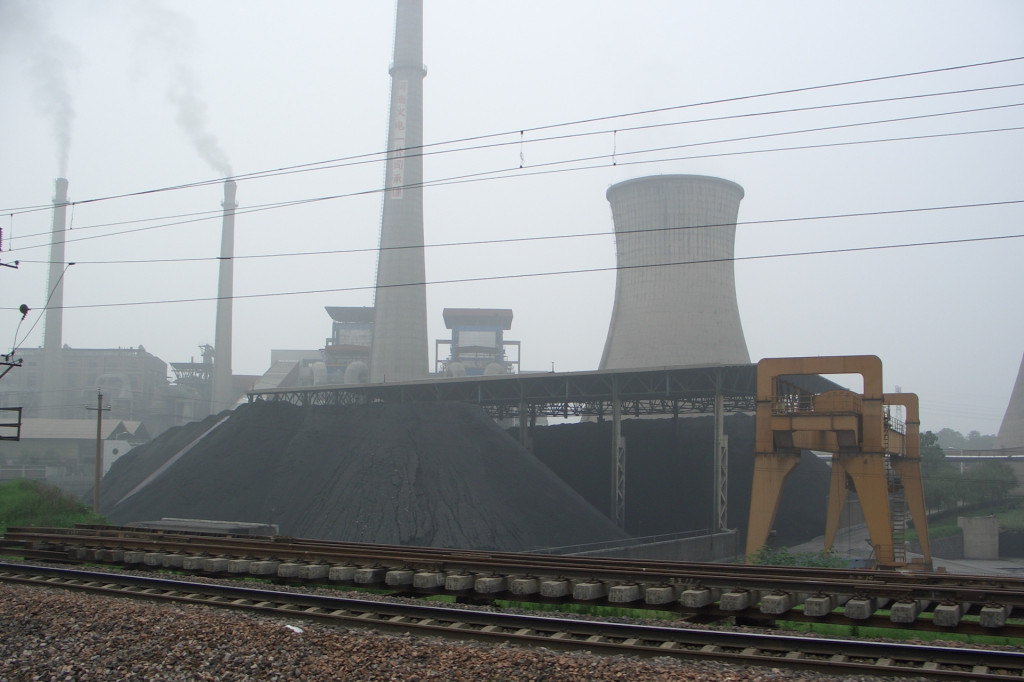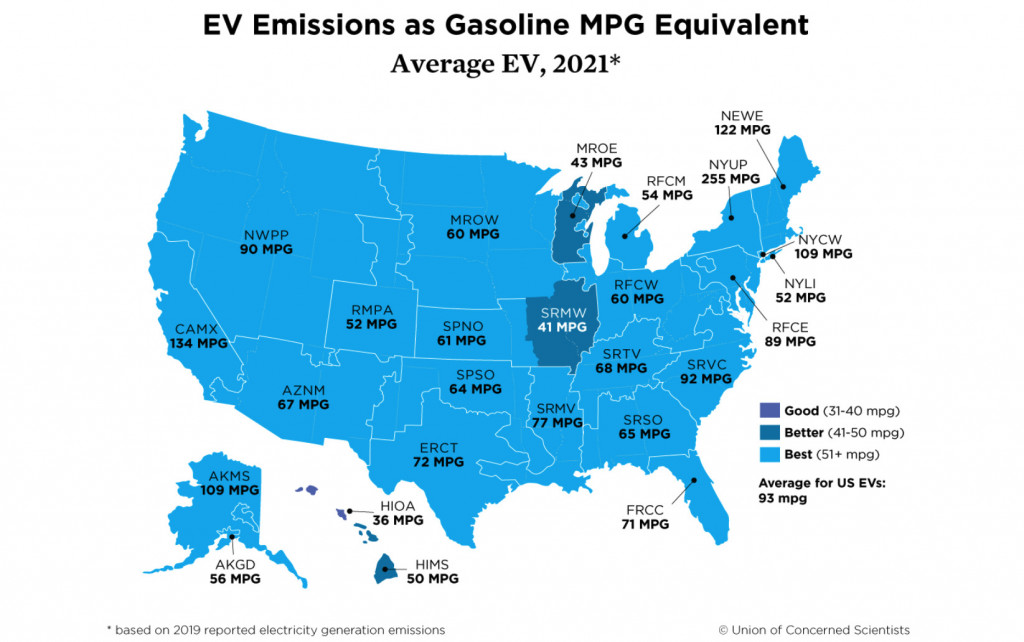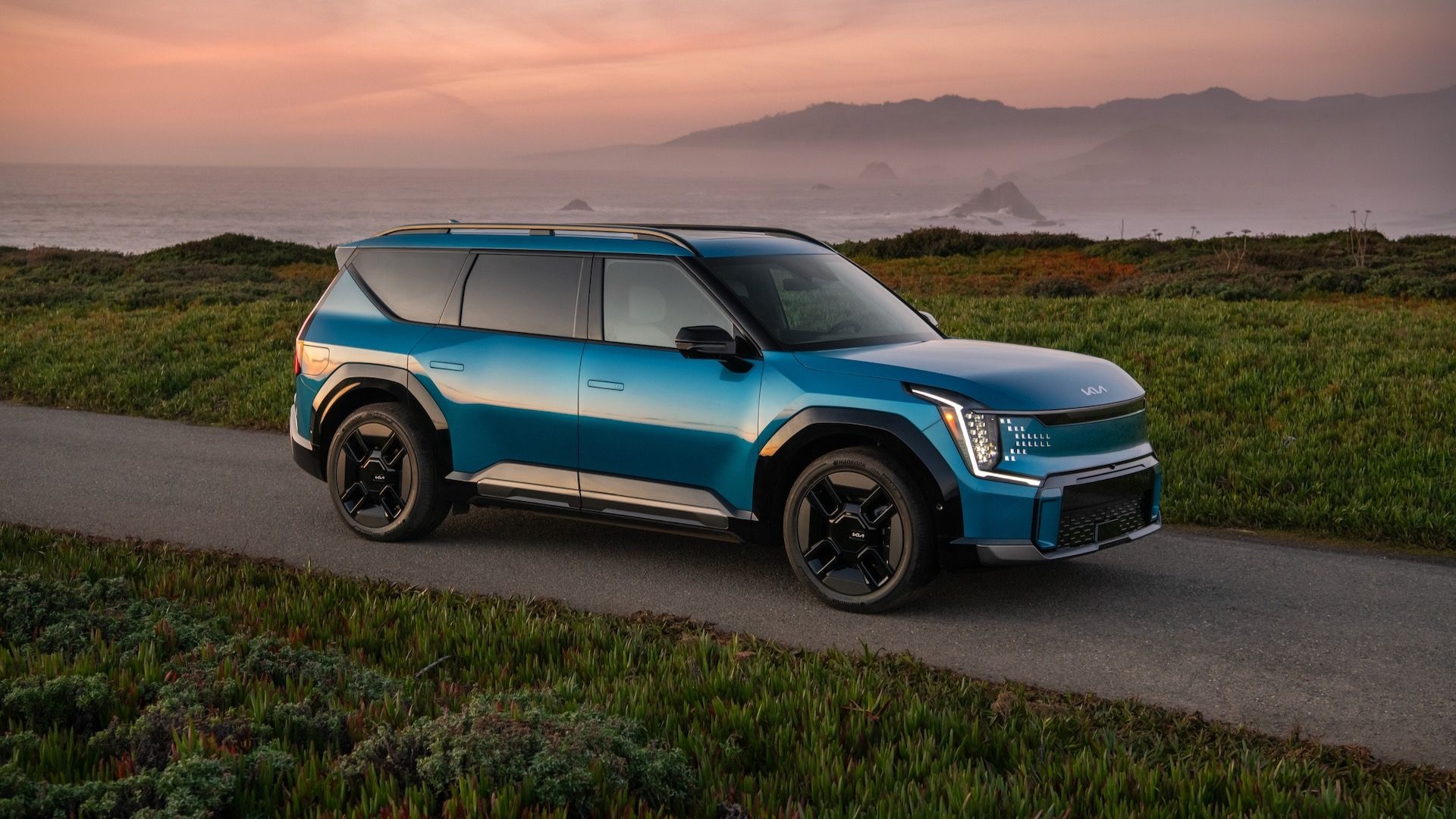Electric cars are only as clean as the grid they plug into, and the emissions from using your EV will keep dropping over the years you use it because the grid keeps getting cleaner.
It’s a point we emphasize regularly, and after Thursday’s Supreme Court ruling, the assurance of a cleaner grid over time, everywhere, is no longer a foregone conclusion. That’s because based on this ruling, it’s quite possible that electric vehicles in some regions of the U.S. will carry a heavier carbon footprint than they might have otherwise, for years to come.
The Obama-era Clean Power Plan, which was at the center of West Virginia et al. v. Environmental Protection Agency, had been temporarily blocked in the courts and never actually became the rule. It might have been the most effective mechanism ever, not just for controlling and reducing carbon emissions from power generation, but for cleaning up U.S. grid energy as a whole, profoundly so.

Coal power plant in China
Ironically, it was a free-market approach. Simply put, it would have required a cap-and-trade market for carbon pollution—meaning that it incentivized utilities to shift their power generation toward renewables like wind and solar, and away from coal or natural gas. They could still use the combustion means, but it would cost them increasingly more, over time.
But the Supreme Court’s problem with the Clean Power Plan hinges on how it worked. It combined emissions from power plants and utilities within states into a single composite. Instead, the majority justices ruled, each power plant must have the same rules applied, and the scheme falls outside the regulatory role of the EPA.
What takes its place may be a series of blanket limit rules—in which the EPA might eventually call for specific requirements on which technologies do or don’t work toward climate-change and CO2-reduction goals.
The ruling, as some were quick to point out—countering confusing early headlines that might have been written in anticipation of what some earlier in the week speculated was coming—does not specifically limit the EPA’s authority to fight climate change.
As such, the utilities that churn out pollution from coal, or rely almost entirely on natural gas, might continue to do so for a longer time, without the financial pressure to retire those coal plants if they meet the minimum emissions requirements.

Union of Concerned Scientists gasoline MPG equivalent for EVs, 2021
Further, there’s not as much of a guarantee that the rising tide will lift all—to put it in climate terms. The periodic national maps that the Union of Concerned Scientists puts out, effectively calculating the mile-per-gallon equivalent for your EV on a carbon basis, might become even more varied, depending on the power choices of each particular local or regional utility.
Where utilities have already made long-term commitments to shift to renewables, those EVs will keep getting cleaner; elsewhere, the change won’t happen so quickly. It's far too early to go granular on what this might mean for individual utilities, but outside of pressure from ratepayers, companies, and regional politics, a great amount of urgency may have been lifted.
As we reported last year, citing UCS data, the Ford F-150 Lightning has the well-to-wheels carbon footprint of an 85-mpg gasoline vehicle, and for more than 70% of the U.S. population, driving the Lightning will produce less than half the global warming emissions of the gasoline model. As of 2021, 97% live in an area where driving an EV produces fewer emissions than a 50-mpg gasoline car, according to UCS.

2022 Ford F-150 Lightning
The ruling is also at odds with a wide range of federal spending—such as the bipartisan infrastructure bill that designates $65 billion to upgrade the grid ahead of a push to renewables, and will send $7.5 billion for the deployment of EV charging stations.
The Sierra Club called the ruling “deeply disappointing and dangerous,” and noted that it “effectively eliminated the US Environmental Protection Agency’s most effective tool for reducing climate pollution from existing fossil fuel burning power plants.”
The EPA also does have the power to regulate what are called criteria pollutants—carbon monoxide, ozone, lead, nitrogen oxides, particulate matter, and sulfur dioxide—and it might potentially greatly tighten those standards to outmode coal plants and make them cost-prohibitive.
Establishing per-source carbon-emission limits will be a lot harder than anything market-based—and, as some pointed out, more expensive for taxpayers—and there will be many minor challenges along the way.

Electric power plant outside Ithaca, New York
But the support is there from the American public. The National Resources Defense Council (NRDC) pointed to a June 2022 study from NPR, the Robert Wood Foundation, and the Harvard T.H. Chan School of Public Health, noting that nearly 8 in 10 Americans support such limits for coal and gas power plants.
As a range of environmental organizations emphasized in reactions to the ruling, clean-energy and climate legislation is likely the most effective remedy.
“Congress must expeditiously enact robust and equitable clean energy and climate legislation,” said UCS president Johanna Chao Kreilick. “As the mounting toll borne by communities across the country and around the world makes clear, climate change is here, today, and there’s no time left to waste.”













